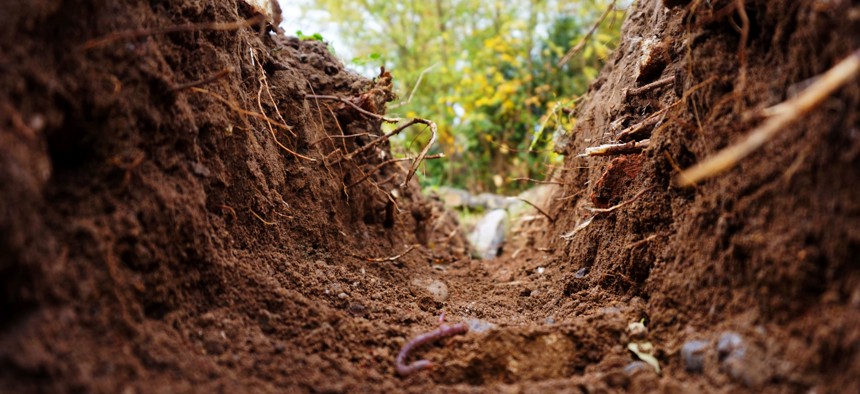An Invasive 'Jumping' Worm Spreads in the US, Threatening Forests

GettyImages/ Silvio Kopp
The worm is now showing up in multiple states. Its voracious eating habits could harm native wildlife and plants. Scientists say there isn't a way to combat the pest on a widespread scale.
An invasive species of jumping worms has spread throughout more than a dozen states, causing damage to plants, animals and forests.
Native to East Asia, the invasive species, known as the Asian jumping worm, was first spotted in the U.S. in Wisconsin around 2013. Scientists believe the worms were brought here as fishing bait.
The species is harming ecosystems. The jumping worms can devour organic matter more rapidly than their counterparts, robbing forests of the layer critical for seedlings and wildflowers. In areas of heavy infestation, native plants, soil invertebrates, salamanders, birds and other animals may decline, scientists warn.
“They grow really quickly, so in the spring you don’t notice them at all,” Tim McCay, a biology professor at Colgate University, told NYup.com last week. “But by the end of the year they can be extremely abundant.”
Unlike more 'common' invasive earthworms from Europe (nightcrawlers, red wigglers) Amynthas spp. live in top layer of soil where they consume enormous amounts of organic matter, transform soil structure. Video courtesy of UW–Madison Arboretum. pic.twitter.com/qi6tCHV6hV
— Steve’s Outside (@featheroutdoors) April 12, 2022
Rapidly Spreading
The species can be found from Long Island, New York to Ontario, Canada. Besides New York, they have been spotted in Missouri, Illinois, Wisconsin, Iowa, Kansas, Nebraska, Oklahoma, Texas, Louisiana, Indiana, Minnesota, Indiana, Kentucky, Tennessee and Ohio.
In New York, scientists fear the invasive species will slowly destroy forests. Normally, worms are great for composting and farming. However, in forests where leaf litter—a thick layer of dead leaves that is important habitat for plants, insects, and other wildlife, like salamanders—slowly decomposes, the worms are a problem because their eating habits can lead to a reduced biodiversity and soil erosion.
"Not only do [Asian jumping worms] change the soil structure and the nutrient dynamics in the soil, but they also somehow or another displace other species of earthworms that are already there," Brad Herrick, ecologist at University of Wisconsin-Madison Arboretum, said in a recorded video.
The University of Wisconsin-Madison Arboretum, a teaching and research facility, is working on a jumping worm research study. The staff will compile, analyze and interpret data to create outreach materials to inform gardeners, land owners and industry professionals.
Nicole Flowers-Kimmerle, an agriculture and a natural resources educator in Wisconsin, compiled a list to tips that can be used to help stop the spread of jumping worms, including:
- Thoroughly clean tools, shoes and vehicles when moving from one site to another.
- Only purchase compost, mulch or other organic matter heated to appropriate temperatures and duration to reduce the spread of pathogens, insects and weeds because jumping worm egg casings cannot survive temperatures over 104°F.
- Remove adult jumping worms by placing them in a plastic bag and leaving them in the sun for at least 10 minutes. Dispose of the bag once complete.
- Wash plant roots by completely submerging them in water and washing away the remaining soil.
“There are currently no viable control measures for jumping worms," Flowers-Kimmerle said in a post. "Removing adult jumping worms to decrease the number of egg casings produced is the best control available at this time."
Andre Claudio is an assistant editor at Route Fifty.
NEXT STORY: Colorado May Soon Be the First State to Guarantee Lawmakers 12 Weeks of Paid Parental Leave





